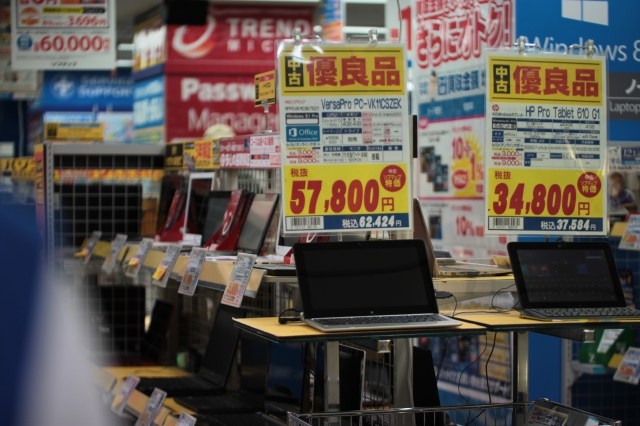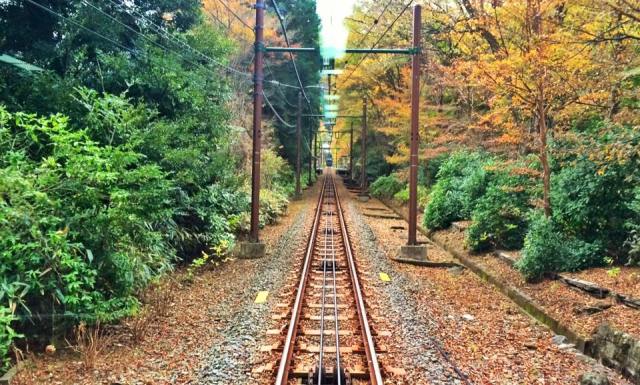(UPDATED – November 1, 2018)
There are many of us who prefer multi-city trips whenever we travel abroad, believing that more is better and one city alone is not enough to experience a country.
But Tokyo could be a challenge. Not only are there a diverse array of attractions in each major district, the countryside destinations are very accessible and thus can be enjoyed in day trips as well.
If you’re the kind of budget traveler who prefers destination immersion instead of counting the cities you’ve gone to, here are 6 day trip itineraries for you can try when in Tokyo:
1. Harajuku, Shibuya, Shinjuku

The JR Yamanote line, the most popular among tourists and one that goes through central Tokyo, passes through all these districts. This tour combines the best of Japan — teenage culture, shopping, food, and the blend of urban development and public parks.
In Harajuku, start your morning in Meiji Shrine, then proceed to Takeshita-dori, the famous street featuring fashion boutiques, major shopping chains and independent sops.
In Shibuya, don’t miss visiting the statue of Japan’s most beloved Akita, Hachiko. You can shop and visit several museums here, too.
In Shinjuku, the Tokyo Metropolitan Government Building provides a free access to a panorama of the city. End your day in the popular food destination Memory Lane, accessible from JR Shinjuku station’s east exit. Alternatively, you can also take the curated evening walking tour of Shinjuku to see the best of the area.
READ: What to see in Harajuku, Shibuya, and Shinjuku
2. Asakusa, Sumida River, Odaiba

If you’ve just arrived in Tokyo in the morning, this Asakusa-Odaiba trip is a half day tour that takes you on a cruise along the Sumida River and to Odaiba, an artificial island that was originally a fort to protect the city in the 1850s.
After checking in your hotel, ride the train to Asakusa station. Nearby is the Tokyo Cruise port. Before you board the water bus, you may consider two attractions around Asakusa to visit: Sensō-ji Temple and Tokyo Skytree. The famous Buddhist temple, Sensō-ji, is a few minutes by foot from Asakusa station. To get to Tokyo Skytree from Asakusa station, transfer to Tobu Skytree Line Local and get off at the Tokyo Skytree station.
There are several Tokyo Cruise routes that you can take, but we recommend two: the Sumida River Line and Asakusa-Odaiba Direct Line. More details about the river cruise here.
Cruising along the Sumida River is an interesting way to see the city from a different angle, passing by landmarks and attractions like Hama Rikyu Garden and Rainbow Bridge.
If you’re not on a tight budget, there are other cruises offered to enjoy the river with a sumptuous spread, such as the Tokyo Bay Lunch Cruise and Tokyo Bay Dinner Cruise.

Odaiba can stand as a destination by itself. Imagine Odaiba as an entertainment island of malls, hotels, and amusement parks. We went there for one thing only: the Gundam replica — life size as it should be. In March 2017, this was dismantled but replaced by a Unicorn Gundam. Shopping here is tax-free, too, but be sure to clarify this with the store first.

3. Tsukiji, Ginza, Chiyoda
Tsukiji (pronounced “ski-gee”) is best enjoyed in the morning since it shuts down in the afternoon — a lesson we learned too late. (Update, 11/01/2018: We will never see Tsukiji again after it closed permanently on October 6, 2018 to give space for the Olympics 2020.)
We settled in visiting the nearby Shinto temple, Namiyoke Inari Shrine, which supposedly guards the marketplace. Restaurants around Tsukiji Market remain open in the afternoon for tourists craving for sashimi.

Three minutes from Tsukiji station via the Tokyo Metro Hibiya Line is Ginza. If you’re a fan of shopping branded items, Ginza is for you. Instead of shopping in the district, though, we looked for good food where we know it lurks: inside train stations or under the train tracks.
The Imperial Palace Gardens is near Ginza. I recommend going further, to the Diet Building. We also visited the Hie Shrine a few blocks from the Diet.
4. Akihabara, Okachimachi, Ueno

You may want to save these for your last day since bargain shops abound in these districts. Start in Ueno with its huge park and zoo. Go back to the train station and walk along the train tracks to Okachimachi. Along these route you’d find great finds not necessarily branded.
READ: Understand the intricate art of painting in Tokyo
5. Hakone

Hakone is perhaps the most popular destination immediately outside Tokyo, attracting 20 million visitors every year, according to the Wall Street Journal.
To go here, you can choose between the Hakone Freepass, the Fuji Hakone Pass or the Hakone Kamamura Pass. All three provide access to the Hakone itinerary, the difference being the other locations you can go to beyond the area.
Attractions in Hakone include Lake Ashi, that you can enjoy while on a cruise. For hundreds of years, Hakone has been a destination for onsen, too. You can see Mt. Fuji from a vantage point in Mt. Fuji.
READ: How to pull off a day trip in Hakone
6. Fuji Five Lakes

Fuji Five Lakes is a group of crater lakes that surround Japan’s elusive, iconic mountain. If you failed to see Mt. Fuji, your chances are higher here since you’ll be climbing the mountain itself.
There are two options to get here from Shinjuku: the Highway Bus, which is shorter by a few minutes and cheaper, and the train. While cheaper, the Highway Bus gets fully booked easily. If you wish to take the discounted Fuji Five Lakes roundtrip ticket, proceed to Shinjuku’s JR East Travel office. The ticket includes the bus from the last train station to Mt Fuji 5th Station, but excluding tours around the lake. Be sure to bring your passport to avail the ticket.
Alternatively, you can also choose hassle-free curated tours to Mt. Fuji such as:
Since the Fuji Five Lakes roundtrip ticket is good for two days, you can spend a night in the town called Lake Kawaguchi, named after one of the five nearby lakes. From Lake Kawaguchi, regular tour buses take tourists to two lakes using different routes. There is also a theme park nearby; Fuji-Q Highland famous for its extreme rides and haunted attractions.
If you’re in the area for just a day, I recommend heading towards Mt. Fuji 5th Station first and exploring Lake Kawaguchi later. Mt. Fuji 5th Station is the take off point for hikers wanting to overcome the mountain — a route first-timers say can take overnight in spring. It is extremely cold in the station at 2,000 plus meters above sea level, but the view of Mt. Fuji and the surrounding mountains (including the sea of clouds) is worth the frost.
Tokyo is filled with several attractions and landmarks that all make a 4D3N stay too short a time to understand the city. You can design your own Tokyo itineraries from these suggestions, modifying them according to whichever suits your budget and requirement. The key is to cluster attractions along a certain rail line into a day itinerary.
Happy traveling!





Pingback: How to enjoy 9 days in Tokyo for less than Php16,000 (42,100 yen) | WorkaLife
Pingback: Tokyo budget trip: How low can you go? | WorkaLife
how can i start processing visa if im in sg and after 6 days ill be back to work in abu dhabi?
LikeLike
Pingback: Filipino tourists in Japan rose by 46% in 2015 | WorkaLife
Pingback: 9 Places Where Filipino Tourism is Booming – Workalife
Hi thanks for ssharing this
LikeLike